|
Geographic range and habitat
Tht Ginkgo biloba is able to grow in temperate areas of the world. The following is a map of its
distribution in the United States: Kentucky, New Jersey, New York, North Carolina, Pennsylvania, and Virginia.
Ginkgos are remarkably hardy. They prefer full sun, and well
drained, moist soil, however, they can tolerate air pollution, fire, salt spray, drought, temperatures as low as
–20 degrees F, and are resistant to insects. G. biloba can also tolerate shade, and continue its rate of growth
even when shaded by larger trees. (University of California Museum of Paleontology) In one article, it stated, Buddhists planted g. biloba around temples to protect
them. In one such location, the trees grew so close together, that when there was a fire around the temple, the trees survived,
and the temple was not burned. In Japan, there is a tree, which
was 1 Km from the atomic bomb dropped on Hiroshima, which lives today. (Kwant,
2002) The temple near the tree was rebuilt around the surviving ginkgo. See photo to right. http://www.xs4all.nl/~kwanten/history.htm
Reproduction Ginkgoes are dioecious, which means there are male and female
trees. Female trees produce ovules in pairs on the end of stalks. See photo below.
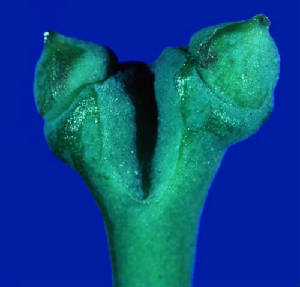
|
| http://www.science.siu.edu/landplants/Ginkgophyta/images/Ginkgo.ovule.JPEG |
Male trees produce cones, with pollen which contain motile sperm.
Only gingkoes and cycads produce flagellated sperm among living plants. A research assistant named Sakugoro Hirase, in Tokyo
was the first to discover the moving sperm in ginkgoes in 1896. (Kwant, 2002) See to right.
Rarely, the ovules and pollen grow directly on the leaves in
very old trees, called Ohatsuki.
| ovule on leaf |
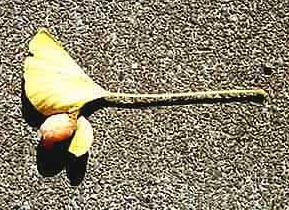
|
| http://www.xs4all.nl/~kwanten/thetree.htm |
| Pollen in leaf |
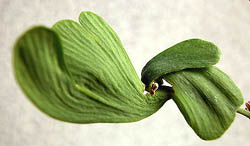
|
| Gingko seeds are produced in the spring. |
The seeds are woody inside, with a soft yellow outer coating.
|
 |
 |
 |
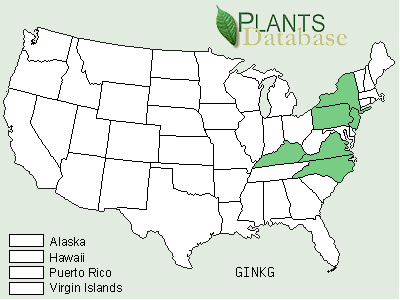
|
| http://plants.usda.gov/cgi_bin/topics.cgi |
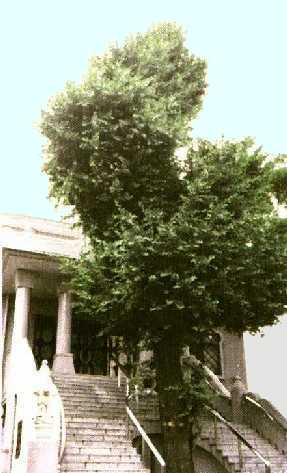
|
| http://www.xs4all.nl/~kwanten/history.htm |
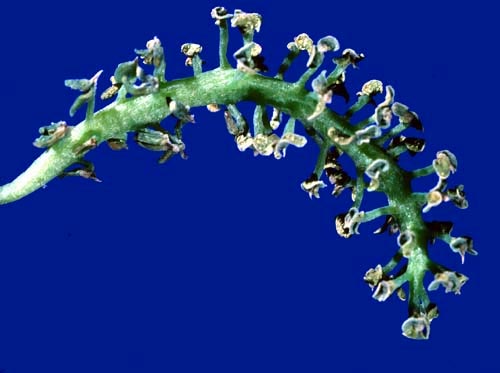
|
| http://www.science.siu.edu/landplants/Ginkgophyta/images/Ginkgo.male.cone.JPEG |
In the fall, the seeds are fertilized, and drop off the tree.
The grey squirel is the number one animal credited with dispersal of the seeds. The young tree can grow over 30 cm per
year durng the first 30 years of its life. They must be about 20 years old to produce seeds and pollen. The ginkgo biloba
is also capable of reproducing asexually. An older tree sends shoots downward from its branches, called burls or “chi-chis”.
Theses shoots send out roots when they touch the ground. Some older trees also produce basal chi-chi, which are growths sprouting
up from exposed roots. See photo below.
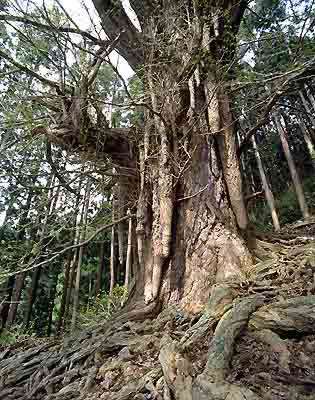
|
| http://www.xs4all.nl/~kwanten/thetree.htm |
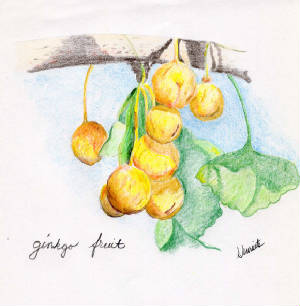
|
 |
 |
 |
|

